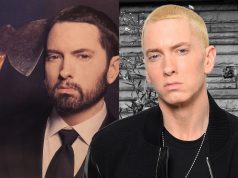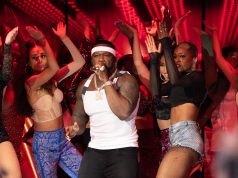Lupe Fiasco Analyses Genius of Eminem’s “Stan” in His MIT lecture.
One of the most important and reflective lyricists in the current hip hop scene, Lupe Fiasco, has received an MLK Visiting Professorship at MIT for the 2022/2023 academic year. In his first lecture, “Rap Theory & Practice: an Introduction”, Lupe analysed some fundamental concepts of the genre.
Introducing students to different types of narrative structure, he talked in length about a repetition-break plot structure where a plot twist enters the story after a listener accepts a status quo through the repetition just for it to be interrupted.
The best example of this type of narration, which we all know since childhood, is “Stan”, insists Lupe. Not only because it is effective, but because its power lies so deep in our subconscious and Marshall effectively controls this power:
“Stan” is probably Eminem’s greatest record. Arguably, hands down, probably Eminem’s greatest record. The song is about a fan. It’s where we’ve got the word “stan” from. The song is about a fan who writes Eminem a letter. And he’s writing this letter: “Dear Marshall”. He writes a letter in the first verse. Then he goes and writes a letter in the second verse. This one is a little bit more aggressive, a little bit more “you owe me something” type of vibe. Then he does the third verse. The third verse isn’t a letter per se. It’s a recording. And Stan, this fan of Eminem. He’s recording himself kidnapping, in true Eminem fashion, his girlfriend and doing this weird murder-suicide plot. And he’s recording this thing to Eminem. And then at the end of that third verse, he comes to the realisation, like, “We’re going to drive this car over this bridge”. He’s like, “Oh, shit! How am I going to send this out?” But that’s not the plot twist, is it? But it’s great, he could’ve stopped right there. But there’s the fourth verse. It breaks this 1-1-2 structure, this trifecta, this tricolon: 1-1 then the twist. He does 1-1-1-twist. And the twist is Eminem finally receives the letter from the first verse.
And he sits down to respond to it. And he says, “Dear Stan, I appreciate that you got all my records. I’m sorry I couldn’t get back to you. I was on tour. Hey, man, I hear you’re going through a lot. Just chill out, you’ll be alright. And then Eminem, as he gets toward the end of the verse he’s saying, sometimes people do crazy things. Like, there was this guy who got upset and he took his car with his girlfriend, and he drove it off a bridge in the water.
And Eminem has an epiphany, like, oh shit. It was you. The layering and the complexity of how he worked, that repetition-break plot structure is masterful. He took a very simple concept that we all learned when we were kids — because we all knew chinny chin chin, so it’s very, very simple macros that we all can process and all have been privy to. But then how do we turn around and use that in our work as rappers? Very basic things. Instead of trying to do a bunch of details, a bunch of word flips, and name flips, and multiple syllables – okay, that’s cool. But can you master these basic things?
And then the argument becomes: “Stan” is one of the highest selling records of all time in any genre of music. To the point where the name of the song entered into common vernacular. The power of rap. On par, culturally, with E=MC2. And other catchphrases from different fields — science, social science, archaeology, history, whatever you want — “Stan” is right there.
It is a powerful and confident analysis provided by one of the most interesting lyricists of the generation. It is absolutely worth watching:












